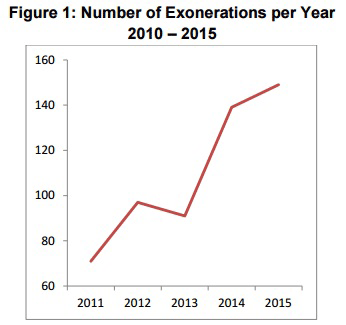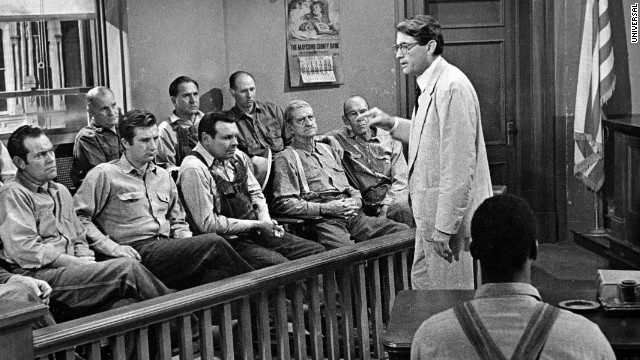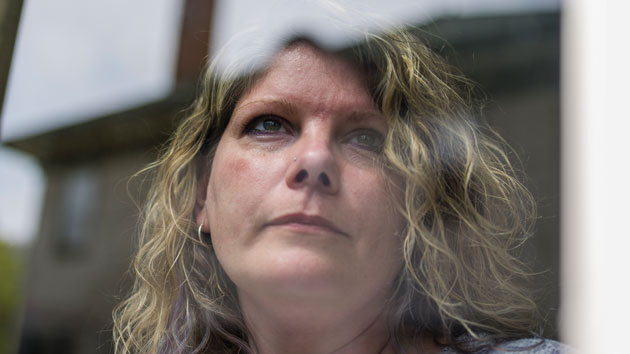
Sean Lean/Shutterstock
Call it the Serial effect. According to a new report from the University of Michigan Law School’s National Registry of Exonerations, 2015 set a record for the number of wrongly convicted Americans who finally found justice. There were 149 people last year who were either declared innocent or otherwise cleared of the consequences of their convictions or guilty pleas. Many had served some lengthy prison time—the average exoneree had served nearly 15 years—for crimes they did not commit.
The data in the report paints a disturbing portrait of a criminal justice system riven with errors and official misconduct. Among the lowlights:
- Innocent but pleaded guilty: An extraordinary number of the exonerations came in cases in which the defendants had pleaded guilty (65 out of 149), more than in any previous year since the registry started in 1989. These were mostly drug cases but also included eight homicides. Those who pleaded guilty to crimes they didn’t commit tended to be mentally ill, intellectually disabled, or under the threat of an even longer prison sentence should they try to go to trial.
- No-crime crimes: Seventy-five exonerations came in cases where it turned out no crime had even been committed. A number of these were old murder cases involving arson. They brought to mind the sad story of Cameron Todd Willingham, whom Texas executed in 2004 for allegedly murdering his three children through arson, despite significant evidence that the forensic arson investigation that led to his conviction was mostly bogus. Those same sorts of bogus fire investigations played a role in five of six of the homicide cases that led to exonerations last year in cases where officials ruled that no crime had been committed. In those cases, the defendants were luckier than Willingham: The fires that led to their murder convictions were shown to be accidents, not arson, and their convictions were vacated.
- False confessions: In 27 of the exonerations in 2015, including 22 homicide cases, the defendants confessed to crimes they hadn’t committed. Many of these people were juveniles, mentally ill, or intellectually disabled—precisely the folks currently overrepresented on death row.
- Official misconduct: Prosecutors and cops don’t come out looking good in the new report. Official misconduct was a factor in 75 percent of the homicide exonerations, a number that’s even bigger in the cases where there were false confessions. Eighty-two percent of those were the product of misconduct by cops or prosecutors.
- Death penalty errors: Five of the exonerees in 2015 were death row inmates, three of whom had been there more than 20 years—more evidence of serious flaws in the capital punishment system.

The exonerations were clustered in jurisdictions where local prosecutors had made significant efforts to reform their practices to prevent wrongful convictions. The largest number came from Harris County, Texas, where a new assistant district attorney in the post-conviction review section discovered that a lot of the cases coming through her office involved defendants who’d pleaded guilty to a drug crime, only to have lab work come back months later showing that the stuff cops had seized from the defendants wasn’t actually a controlled substance.
Washington Post columnist Radley Balko has dug into this issue and found that Harris County isn’t the only place with the problem. The field tests cops use to test for drugs are notoriously unreliable, and they’ve mistaken everything from chocolate chip cookies to cheese and tortilla dough for drugs. Nonetheless, the false guilty pleas—usually made under pressure and the threat of even longer prison sentences from a jury trial—often aren’t thrown out when later testing finds an absence of drugs. In 2014, the Harris County district attorney’s office launched a Conviction Integrity Unit to try addressing such problems. The result is a startling number of drug crime exonerations just from that one office—73 of them so far.
Such units within prosecutors’ offices offer hope for reforms to the criminal justice system. But the new report suggests they have a mixed record that can depend largely on the drive of an individual prosecutor rather than systemic support. Harris County has shown lots of promise, as has a unit in Brooklyn, which has been responsible for the exoneration of 16 murder defendants in the past two years. A more discouraging example came in New Orleans, which launched a Conviction Integrity Unit during the district attorney’s reelection campaign, in partnership with the local Innocence Project. According to the report, the unit kicked off in January 2015, worked on a single exoneration, and gave it up a year later.
Media accounts and shows like Serial and Making a Murderer have raised awareness about the problems with the criminal justice system and the prevalence of wrongful convictions, but the report urges caution before declaring victory. “As with climate change, the significance of the issue of false convictions is now widely acknowledged, despite committed doubters,” the authors write. “In other respects, we are far behind. We have no measure of the magnitude of the problem, no general plan for how to address it, and certainly no general commitment to do so. We’ve made a start, but that’s all.”















